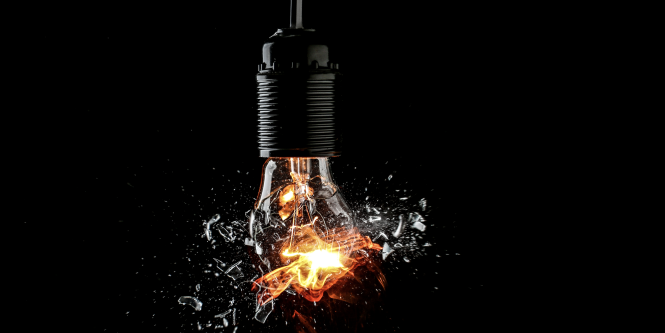

Solving bad lighting problems is crucial for any space, whether it’s a home, office, or commercial area. Poor lighting can significantly impact productivity, mood, and overall well-being. This comprehensive guide will delve into effective solutions to improve your lighting and create a more comfortable and functional environment. We’ll explore different lighting types, installation strategies, and even budget-friendly options. Get ready to transform your space from drab to fab with brighter, more efficient lighting solutions!
Understanding the Impact of Bad Lighting
Poor lighting can negatively affect various aspects of a space, from visual comfort to productivity levels. Insufficient lighting can strain the eyes, leading to fatigue and discomfort. This can result in decreased concentration, reduced efficiency, and increased errors in tasks requiring precision. In a home setting, inadequate lighting can make it difficult to perform everyday activities and can affect the mood and ambiance of the space. In commercial environments, poor lighting can deter customers, reduce worker morale, and impact productivity.
Identifying the Specific Lighting Needs of Your Space
Before jumping into solutions, it’s vital to assess the specific lighting needs of your environment.
Different Types of Lighting to Consider
Different areas have different needs. A kitchen, for instance, requires task lighting focused on work surfaces, while a living room might benefit from ambient lighting to create a warm and inviting atmosphere. Consider the activities performed in each zone. Careful planning based on the intended use of each space allows you to tailor your solutions to maximize effectiveness and efficiency.
Exploring Different Lighting Types and Their Applications
Choosing the right lighting type for your space is essential for creating a visually appealing and functional environment.
Task Lighting for Focused Work
Task lighting provides focused illumination precisely where it is needed, such as above workspaces or reading areas. Properly positioned task lighting, whether recessed or pendant lights, allows for focused work without eyestrain. Recessed lights with adjustable arms or pendants with adjustable height can be a practical addition to increase usability. Examples might include pendant lights over kitchen counters or track lighting above a desk.
Practical Tips for Improving Lighting
Implementing these simple strategies can transform your space with better lighting solutions.
The Power of Color Temperature and Illumination
Color temperature significantly affects the perceived ambiance of a room. Warmer tones, like those found in incandescent or LED bulbs with lower Kelvin values, create a cozy and welcoming atmosphere. Cooler tones, such as those in fluorescent lighting, are often preferred in commercial settings for their ability to enhance clarity and reduce shadows. Choosing the right bulb temperature depends on the desired aesthetic and the specific use case of the area.
The Role of Natural Light
Integrating natural light is vital for optimal lighting in any space.
Maximizing Daylight
Maximize natural light by ensuring windows are unobstructed and incorporating light-colored surfaces to reflect daylight. Strategically placed mirrors can bounce light around a room, effectively enlarging and illuminating the space further. This will lessen your reliance on artificial light, significantly reducing energy costs and offering more natural illumination, which is good for mental and physical well-being.
Budget-Friendly Lighting Solutions
Improving lighting doesn’t always have to be expensive.
Affordable Alternatives
Consider using affordable yet effective alternatives like energy-efficient LED lights. They offer comparable brightness to traditional incandescent bulbs while consuming less energy, which results in lower energy bills. Smart lighting solutions can provide customization through smartphone applications, further enhancing the user experience and functionality of your lighting system.
Advanced Lighting Techniques
Delving into more advanced techniques opens possibilities for creating unique and customized lighting experiences.
Layered Lighting
Implementing a layered lighting design strategy involves combining various lighting types to create depth and dimension in a space. A good example is to incorporate different lighting levels, from ambient to task lighting. This approach enhances the visual appeal, enhances functionality, and accommodates various activities, fostering a well-rounded experience.
Choosing the Right Lighting Fixtures
Selecting the correct lighting fixtures is crucial for enhancing the aesthetic of any space.
Matching Fixtures to Decor
Pay attention to the style and design elements of the space when selecting your fixtures. Choose fixtures that complement the existing decor. Consider the overall aesthetic you are aiming for, ensuring your lighting fixtures are harmonious with the chosen design elements.
Maintenance and Troubleshooting
Proactive maintenance and troubleshooting can prolong the lifespan of your lighting system.
Regular Checkups and Cleanups
Regularly inspect and clean lighting fixtures to ensure optimal performance. Dust accumulation can significantly reduce light output. Implementing a routine for cleaning fixtures and replacing bulbs can prolong the fixture’s life, saving on long-term costs and optimizing light output for the space.
In conclusion, solving bad lighting problems requires a systematic approach. By understanding the nuances of lighting design, considering the specific needs of your space, and exploring a range of lighting solutions, you can significantly enhance the ambiance and functionality of any environment. Implementing these strategies will not only improve aesthetics but also contribute to a more comfortable and productive atmosphere. Ready to illuminate your space? Explore our comprehensive lighting guide for more practical tips and tricks.